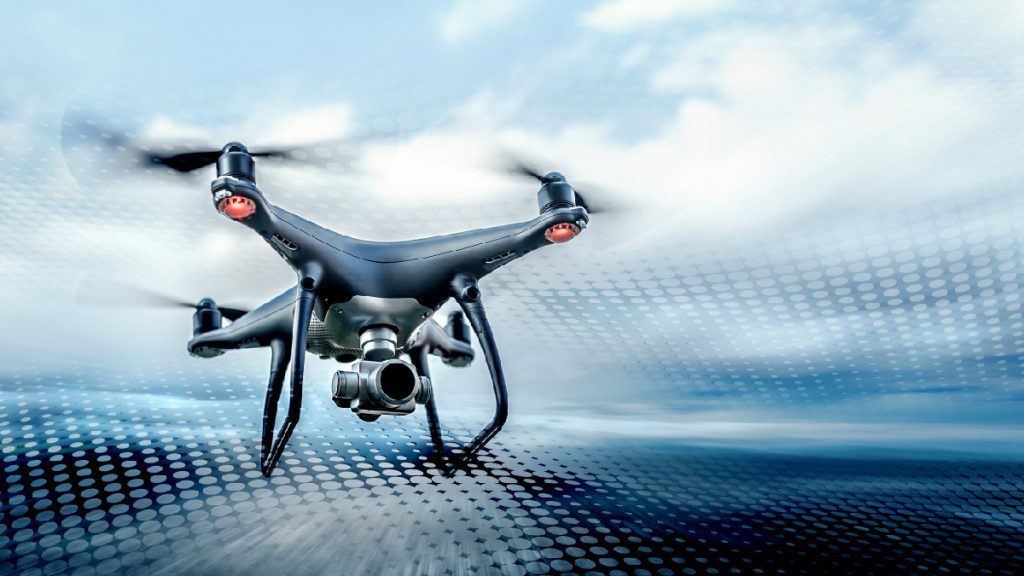
Drones are a game-changing technology that will change in ways you probably never thought possible over the course of the next ten years. Even though you might not give drones much thought now, they will have a significant impact on all of our lives in the future.
Today, drones can be found on other planets and in space. The Ingenuity Mars Helicopter was part of the Perseverance rover, which NASA successfully landed on Mars earlier this year.
Drone technology had never before been tried on an other planet. Despite being brief, the Ingenuity flight was a Wright Brothers moment. It carried a fragment of the wing fabric from the Wright brothers’ airplane, which is a fascinating side note. Inventiveness successfully completed several flights in the much thinner atmosphere of Mars, and the NASA Jet Propulsion Laboratory continued its test flights for an additional month. In terms of drone development, this is really a minor step.
Modern Day Drones
Commercial drones of today fall under the heading of electronic vehicles (EV). Yes, drones provide a crucial alternative to electronic cars in the fight against greenhouse gases and the transition to carbon neutrality.
The future of drones has also been aided by artificial intelligence (AI). Due to AI’s capacity to operate in circumstances and places where humans cannot, drones may advance faster across many industries. Like Automatic Dependent Surveillance-Broadcast, it can also use real-time data analysis to modify flight telemetry in response to topography and other barriers (ADS-B). Commercial airplanes have long had access to ADS-B, which offers situational awareness and self-separation between aircraft.
In addition to technology, industry rules have aided in addressing safety and security issues. A crucial step toward the integration of small unmanned aircraft into the National Airspace System was taken recently with the Federal Aviation Administration (FAAadoption )’s of regulations requiring a digital license plate that can remotely identify unmanned aircraft.
For the FAA to permit drones to fly “beyond visual line of sight (BVLOS)” and for autonomous flight, this identifying technology is a crucial component. These autonomous capabilities incorporate the integration of both LiDAR and more recent vision systems, much like improvements in the car industry. Due to these developments and restrictions, an era of urban air mobility (UAM) to clear our transportation systems of congestion may soon arrive, bringing with them passenger-carrying aircraft that are several times larger than the majority of today’s small commercial drones.
The Future Of Drones
According to Reportlinker’s “Global Forecast to 2030” study, the UAM market will grow from $2.6 billion in 2020 to $9.1 billion in 2030.
As cities all over the world look for solutions, Uber Air asserts that the solution to traffic congestion is closer than you think and wants to seize a significant piece of the UAM pie for itself.
Infrastructure needs to be adapted to handle all these new vehicle types, which has given rise to concepts like vertiplaces, vertiports, and vertistops. Recently, a strategy to support NASA’s advanced air mobility (AAM) initiatives was formed by the FAA, NASA, and others. Oneida County was given a $897,000 contract to develop AAM and vertiports at Griffiss International Airport.
Although a lot of the drone future may seem science fiction, it is actually far closer than you might imagine. As UAM, vertiplaces, and vertiports concepts have the potential to alter our urban landscape, business leaders need to be informed of these changes, consider how they may affect their companies, and provide data analytics and cost reductions. The largest American parking garage operator and Joby Aviation recently announced a cooperation to build more parking spaces for urban air taxis, as just one recent illustration.
Closing Thoughts
Drones can have an impact on practically every industry and soon yield a profit. For instance, delivery, surveying, site selection, construction, real estate, agriculture, and interior or outdoor inspection are all commercial tasks that have been touched by drones. Drones are quickly moving beyond data collection to becoming important modes of transportation and escorting us into the future.